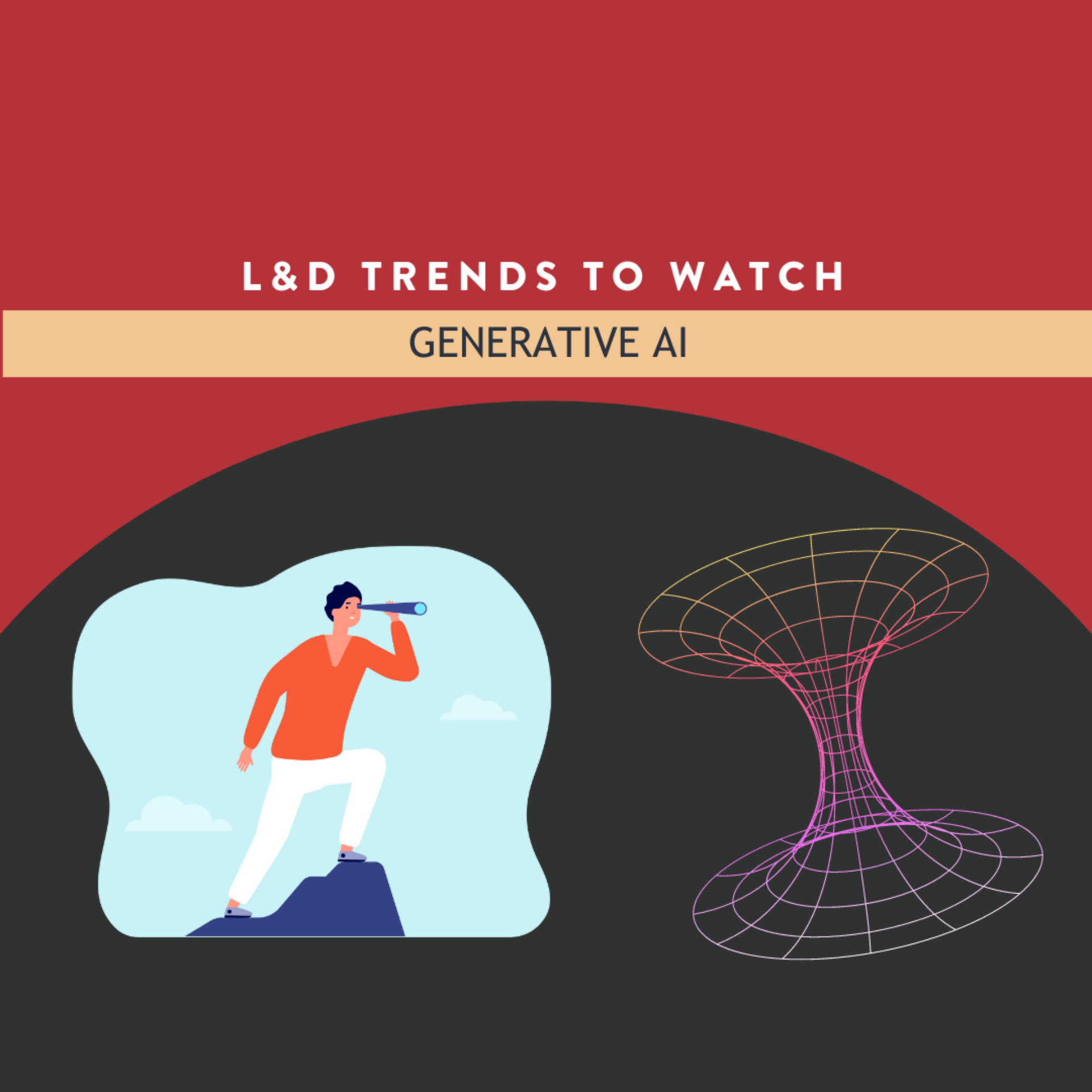
Embracing the Future: Early Adopters of Generative AI for Learning
In the ever-evolving landscape of education, technology has proven to be a powerful ally, enhancing learning experiences and empowering both educators and learners. One of the most transformative technologies in recent years is generative Artificial Intelligence (AI). Early adopters of AI for learning are pioneering innovative approaches that revolutionize instructional design and create more inclusive, personalized, and effective learning experiences. In this blog post, we will explore some exciting ways in which AI is reshaping the future of education.
Ideas, Ideas, Ideas: Fueling Creativity with AI
AI has the unique ability to process vast amounts of data and generate creative insights that can inspire new learning experiences. Leveraging AI algorithms, instructional designers can analyze various educational resources, learner feedback, and learner preferences to suggest fresh and innovative teaching approaches. In other words, it’s good old-fashioned brainstorming in a new high-tech way. By using AI-generated ideas as a starting point, designers can create dynamic and engaging learning activities that resonate with their learners’ interests and preferences, fostering a love for learning.
Diversity, Equity, and Inclusion: AI-driven Personalization

One of the core tenets of effective learning design is tailoring learning experiences to individual needs and preferences. By allowing users to create custom images and visual content, technology like Midjourney can address the limitations of traditional stock photo libraries and provide a wider range of representation and styles. Consider how difficult it is to find stock imagery of with a 1950’s style comic book look, with diverse characters. Midjourney opens up those customization possibilities.
The Rough, Rough Draft: AI’s Role in Early Learning Design
Designing a comprehensive learning experience often starts with a rough outline of the curriculum or learning solution. Generative AI can accelerate this process by assisting educators in creating an early stage outline for their learning design. By analyzing learning objectives and relevant content, generative AI algorithms can provide a foundation that instructional designers can further refine and enhance to suit their specific learning styles and the needs of their learners.
Understanding Content/Context Quickly: AI’s Multifaceted Perspective
When faced with complex challenges or diverse subject matter, instructional designers can utilize generative AI to gain quick and comprehensive insights into various perspectives and solutions. AI can analyze vast datasets, research papers, and real-world case studies to present different viewpoints, helping learners to gain a well-rounded and informed understanding of the subject matter. This enables learners to grasp the content from multiple angles and fosters critical thinking skills. Further, with generative AI, subject matter experts are no longer being asked to “start from scratch” but rather, they can be leveraged to verify the content and context generated by AI tools.
Writing Assessment Questions Based on Objectives: AI’s Precision in Evaluation
Assessments are essential to gauge a learner’s understanding of the material. AI can help designers draft relevant and objective-based assessment questions with ease. By aligning questions with learning objectives, generative AI ensures that assessments accurately measure a learner’s progress and provide valuable feedback for further improvement.There is a limitation here; we still need humans to evaluate and adjust what we get from generative AI in order to ensure the instructional design quality of the questions and distractors.
Editing and Proofreading: AI’s Quest for Perfection
Creating error-free learning scripts is crucial for effective learning. AI-driven editing and proofreading tools can help instructional designers polish their content and eliminate grammatical errors, spelling mistakes, and other inconsistencies. This ensures that learners receive high-quality and professional learning materials that enhance the overall learning experience.
Repurpose Content for Multiple Audiences: AI’s Adaptive Flexibility
Instructional designers often need to adapt existing learning designs to cater to different audiences. AI can simplify this process by analyzing the characteristics and preferences of diverse groups and repurposing existing content accordingly. This enables designers to efficiently create tailored learning experiences for various learners, without compromising on the quality of instruction.
Early adopters of generative AI for learning are at the forefront of a transformative learning revolution. By harnessing AI’s potential, educators can foster creativity, promote inclusivity, and deliver personalized learning experiences that empower learners to thrive in an ever-changing world. As AI continues to evolve, its role in education will undoubtedly grow, enhancing learning practices and enriching the journey of lifelong learning. Embracing AI’s potential today can pave the way for a brighter and more equitable future in learning.
In closing, we do see great potential in how generative AI can facilitate learning experience design; however, the benefit is the nudge that AI can provide, the direction, the outline, not the finished product which we know requires human touch.
Speak to Dashe about how we can make the best learning experiences, your learning experiences.
Subscribe to receive more insights about this evolving trend.